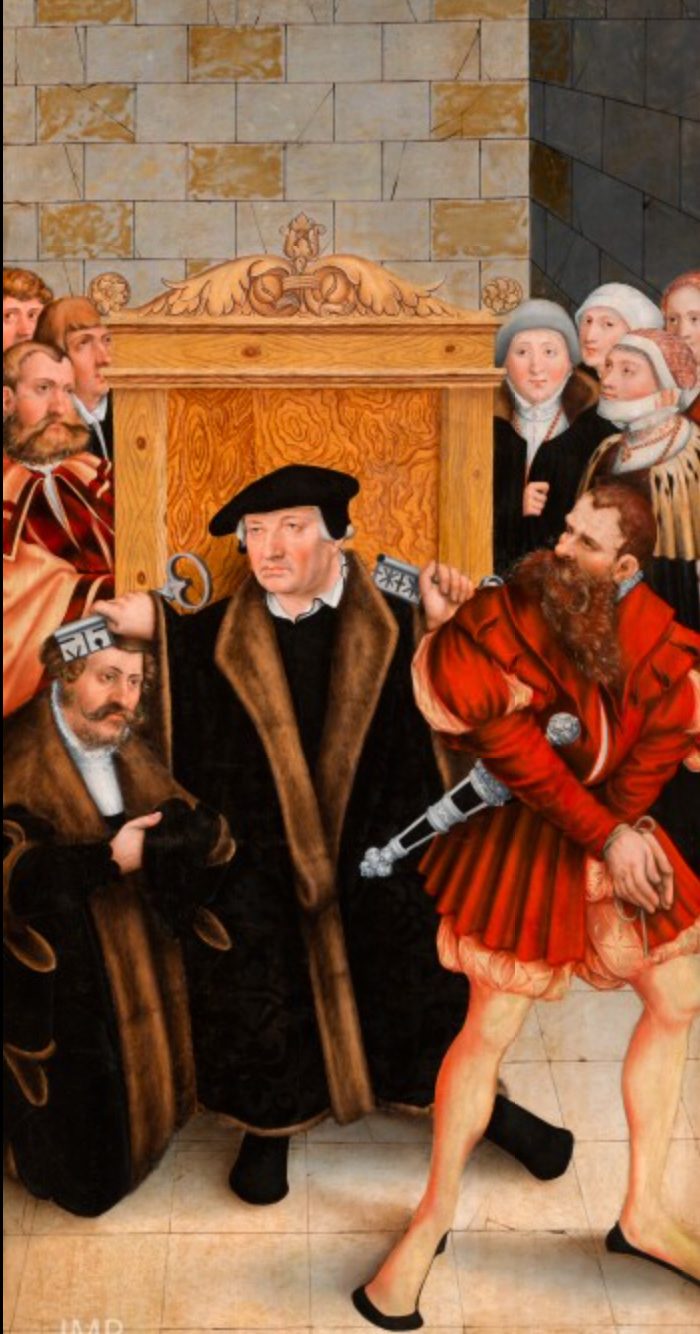
26 Jan Luther and Confession: Beyond Prejudice
Johannes Bugenhagen (1485-1558) is an immensely important, even if rather unknown, figure among Martin Luther’s most faithful collaborators who arrived in Wittenberg already of mature age, attended Luther’s lessons and, after taking a wife in 1522, was introduced by him as a vicar in the city’s parish church. He came from Pomerania where he had been ordained as a priest in 1509 and became leader of the school of Treptow, to the north of Szczecin, today in Poland. Bugenhagen was a point of reference for the local church and considered a theologian of highest respect, alongside Luther and Melanchthon. He is recognized as the apostle of the North in that he worked extensively in favor of preaching, the diffusion of the Reformation, and the organization of local Lutheran churches throughout all of Northern Europe, from Denmark to Sweden to Norway. We are also indebted to him for the translation of the Bible into Plattdeutsch, following Luther’s model.
In the image located to the right of the high altar of Wittenberg, Bugenhagen is shown at work administering penance and confession. He exercises the dual “ministry of the keys,” which consists in “binding” and “loosening” (Mt 16: 19; Mt 18: 18; Jn 20: 23): “he loosens” in the case of authentic penance and conversion, which are accompanied by the gift of true faith, or he otherwise “binds” – that is to say: he remits without pardon –, the one whom, lacking true faith, believes he does not have need of conversion. There are two specific people, one kneeling before God in the act of sincere conversion, probably a merchant as evidenced by his clothing, the other probably a noble, a prince, who believes himself not in need of penance; for this reason he leaves with his hands bound (the image of bound will), withdrawn and with a hostile gaze, slave to his own sin (cf. Jn. 8, 34), not having achieved true faith which converts and liberates through the forgiveness of sins.
The figure of Bugenhagen, according to the most qualified critique, is a masterpiece of portraiture by Lucas Cranach the Elder. Here the stern and serene face of this northern German, Dr. Pommer, in Latin Pomeranus, is shown. The strong lines of his face, the well-pronounced nose, and the calm look of he who understands, as much as is humanly possible, that which is in the heart of man, arouse confidence in whoever approaches him. One could truly trust such a man: he was the confidant and spiritual director of Martin Luther in times of trial. Bugenhagen, the vicar of the church of Wittenberg, had the gift of knowing how to lead men, the gift of knowing how to lead the church.
I deliberately chose this portrayal of the sacrament of penance precisely because it arouses, in the minds of many, several of the problems of how much on average we also know about the positions of the Reformation on the confession of sins. Was this sacrament abolished by Luther or not? The fact that it may be officially presented in an altarpiece beloved by the Lutheran community since its origins and represented in its own essential authenticity cannot but create curious questions in our minds and maybe also succeeds in arousing and nourishing any doubts about our presumed conviction of knowing how things are regarding the confession of sins in the world of the Reformation.
In the image located to the right of the high altar of Wittenberg, Bugenhagen is shown at work administering penance and confession. He exercises the dual “ministry of the keys,” which consists in “binding” and “loosening” (Mt 16: 19; Mt 18: 18; Jn 20: 23): “he loosens” in the case of authentic penance and conversion, which are accompanied by the gift of true faith, or he otherwise “binds” – that is to say: he remits without pardon –, the one whom, lacking true faith, believes he does not have need of conversion. There are two specific people, one kneeling before God in the act of sincere conversion, probably a merchant as evidenced by his clothing, the other probably a noble, a prince, who believes himself not in need of penance; for this reason he leaves with his hands bound (the image of bound will), withdrawn and with a hostile gaze, slave to his own sin (cf. Jn. 8, 34), not having achieved true faith which converts and liberates through the forgiveness of sins.
The figure of Bugenhagen, according to the most qualified critique, is a masterpiece of portraiture by Lucas Cranach the Elder. Here the stern and serene face of this northern German, Dr. Pommer, in Latin Pomeranus, is shown. The strong lines of his face, the well-pronounced nose, and the calm look of he who understands, as much as is humanly possible, that which is in the heart of man, arouse confidence in whoever approaches him. One could truly trust such a man: he was the confidant and spiritual director of Martin Luther in times of trial. Bugenhagen, the vicar of the church of Wittenberg, had the gift of knowing how to lead men, the gift of knowing how to lead the church.
I deliberately chose this portrayal of the sacrament of penance precisely because it arouses, in the minds of many, several of the problems of how much on average we also know about the positions of the Reformation on the confession of sins. Was this sacrament abolished by Luther or not? The fact that it may be officially presented in an altarpiece beloved by the Lutheran community since its origins and represented in its own essential authenticity cannot but create curious questions in our minds and maybe also succeeds in arousing and nourishing any doubts about our presumed conviction of knowing how things are regarding the confession of sins in the world of the Reformation.

